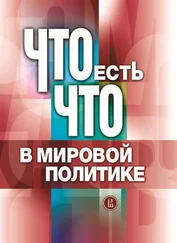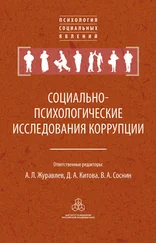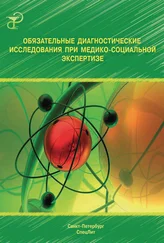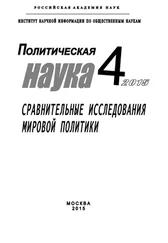Из этого обзора мы видим, что евангелисты атрибутируют Иисусу обращение к Пятикнижию (особенно к Второзаконию), Псалтири и Книге пророка Исаии.
См.: P. N. Anderson, «Aspects of Historicity in the Gospel of John», в кн.: Jesus and Archaeology (ed. J. H. Charlesworth; Grand Rapids: Eerdmans, 2006), с. 587–618, цит. с. 596. Поддержка мнения: U. C. Von Wahlde, «Archaeology and John’s Gospel», там же, с. 523–586, особ. с. 583–586.
Назовем несколько исследований, в которых описана эта переоценка исторических черт Евангелия от Иоанна: J. H. Charlesworth, Jesus within Judaism: New Light from Exciting Archaeological Discoveries (New York: Doubleday, 1988), с. 103–130, особ. с. 118–127; idem, The Beloved Disciple: Whose Witness Validates the Gospel of John? (Valley Forge, Pa.: Trinity Press International, 1995); von Wahlde, «Archaeology and John’s Gospel»; Anderson, «Aspects of Historicity»; idem, «John and Mark: The Bi-Optic Gospels», в кн.: Jesus in Johannine Tradition (ed. R. Fortna and T. Thatcher; Louisville: Westminster John Knox, 2001), с. 175–190; A. J. B. Higgins, The Historicity of the Fourth Gospel (London: Lutterworth, 1960); F. Müssner, The Historical Jesus in the Gospel of St. John (trans. W. J. O’Hara; New York: Herder & Herder, 1966); J. A. T. Robinson, The Priority of John (ed. J. F. Coakley; London: SCM, 1985).
В кн.: Stuhlmacher, «Significance», с. 8–10 к этому списку добавлено еще несколько параллелей. Кроме того, как мы уже отмечали, Штульмахер видит параллели между Мф 11:25–28 и апокрифическим псалмом 11QPsa 154 (11Q5 xviii, 3–6).
О различных истолкованиях этого отрывка см.: Margaret M. Mitchell, «Pauline Accommodation and ‘Condescension’ (συγκατάβασις): 1 Cor 9:19–23 and the History of Influence», в кн.: Paul Beyond the Judaism/Hellenism Divide (ed. T. Engberg-Pedersen; Louisville: Westminster John Knox, 2001), с. 197–214. О философской икономии в 1 Кор см. особенно: Clarence Glad, Paul and Philodemus: Adaptability in Epicurean and Early Christian Psychagogy (NovTSup 81; Leiden: Brill, 1995).
Нрав. пис 64, ET: Abraham Malherbe, Moral Exhortation: A Greco-Roman Sourcebook (LEC 4; Philadelphia: Westminster, 1986), с. 66.
Mitchell, «Pauline Accommodation», с. 206–208, откуда взяты отрывки из Филона.
Пер. О. Левинской. ET: Colson (LCL).
ET: Colson (LCL).
Mitchell, «Pauline Accommodation», с. 206.
ET: Colson (LCL).
Mitchell, «Pauline Accommodation», с. 206.
Классическое рассуждение о роли «восхождения и схождения» в Евангелии от Иоанна, см.: Wayne Meeks, «The Man from Heaven in Johannine Sectarianism», в кн.: The Interpretation of John (ed. John Ashton; IRT 9; Philadelphia: Fortress, 1986), с. 141–173; репринт JBL 91 (1972): 44–72. Цитаты приводятся по версии репринта.
Связь трудов Филона и Четвертого Евангелия обсуждалась неоднократно и на самых разных уровнях. О проблемах, связанных с тем, что Иоанн именует Иисуса Логосом, см.: David T. Runia, Philo in Early Christian Literature: A Survey (CRINT 3/3; Minneapolis: Fortress, 1993), с. 78–83; C. H. Dodd, The Interpretation of the Fourth Gospel (Cambridge: Cambridge University Press, 1968), с. 54–73, 263–288; Harold W. Attridge, «Philo and John: Two Riffs on One Logos», SPhilo 17 (2005): 103–117.
О συγκατάβασις у Златоуста см.: Margaret M. Mitchell, «Pauline Accommodation», с. 211–212; idem, «“A Variable and Many-Sorted Man”: John Chrysostom’s Treatment of Pauline Inconsistency», JECS 6 (1998): 93–111; Robert Charles Hill, вступление к кн.: Commentary on the Psalms by St. John Chrysostom (trans. R. C. Hill; 2 vols.; Brookline, Mass.: Holy Cross Orthodox Press), 1:21–41; Fabio Fabbi, «La Condiscendenza divina nell’inspirazione biblica secondo S. Giovanni Crisostomo», Bib 14 (1933): 330–347; а также особенно: David Rylaarsdam, «The Adaptability of Divine Pedagogy: Sunkatabasis in the Theology and Rhetoric of John Chrysostom» (Ph.D. diss., University of Notre Dame, 2000).
Rylaarsdam, «Adaptability», с. 84 и далее.
Там же, с. 93 и далее.
Обзор интерпретаций и интерпретативных тенденций этого евангельского эпизода с древности до наших дней см.: Janeth Norfleete Day, The Woman at the Well: Interpretation of John 4:1–42 in Retrospect and Prospect (BInS 61; Leiden: Brill, 2002).
Перевод цитат из гомилий Иоанна Златоуста на Евангелие от Иоанна: George L. Parsenios, по источнику: M. E. Boismard and A. Lamouille, Un évangile pré-johannique (EBib 17–18, 24–25, 28–29; Paris: Gabalda, 1993–1996). Указаны гомилия и номер строки.
См., напр.: David H. J. Larmour, «Making Parallels: Synkrisis and Plutarch’s “Themistocles and Camillus”», ANRW 33.6:4154–200. О характерах у Плутарха см. также: Timothy Duff, Plutarch’s Lives: Exploring Virtue and Vice (New York: Oxford University Press, 2002).
Парадигматическое выражение этого подхода см. в кн.: R. Alan Culpepper, Anatomy of the Fourth Gospel: A Study in Literary Design (Philadelphia: Fortress, 1983), гл. 5, «Characters». Четкое, хотя и критическое описание современного литературно-критического подхода к Евангелиям в целом: Stephen D. Moore, Literary Criticism and the Gospels: The Theoretical Challenge (New Haven: Yale University Press, 1989), особенно: с. 15, 74–75.
Culpepper, Anatomy , с. 136.
О святоотеческих трактовках божественной адаптивности у апостола Павла см.: Mitchell, «Pauline Accommodation», с. 208–212.
Перевод по источнику: Kathleen E. McVey, Ephrem the Syrian: Hymns (CWS; Mahwah, N. J.: Paulist Press, 1989), с. 360. О божественном приспособлении и духовном развитии у Ефрема и Оригена см.: idem, «Saint Ephrem’s Understanding of Spiritual Progress: Some Points of Comparison with Origen of Alexandria», The Harp 1 (1988): 117–128.
Читать дальше
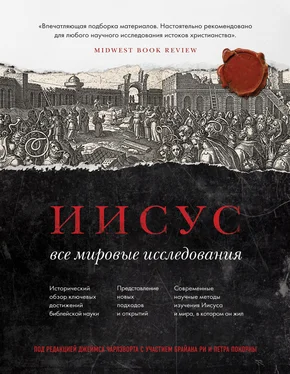
![Коллектив авторов - Что мы думаем о машинах, которые думают [Ведущие мировые ученые об искусственном интеллекте]](/books/31211/kollektiv-avtorov-chto-my-dumaem-o-mashinah-kotorye-thumb.webp)
